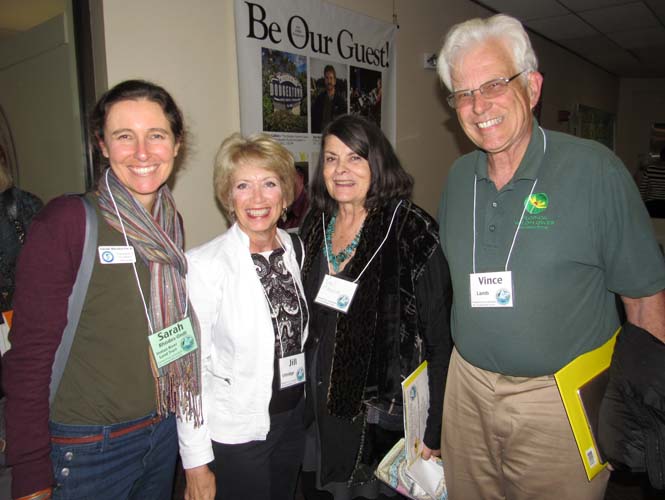An audience of environmentally conscious residents packed the Emerson Center Jan. 19 evening for the start of a conference on Transforming Landscapes for a Sustainable Future, hosted by the Pelican Island Audubon Society. The conference kicked off with keynote speaker Doug Tallamy, University of Delaware professor and author of “Bring Nature Home,” and continued all day Saturday with more than a dozen speakers covering an array of topics focused on protecting and restoring nature and the environment through native plant landscaping.
“This is really the first big conference we’ve had,” said PIAS President Richard Baker, Ph.D., a staunch proponent of efforts to restore the health of the Indian River Lagoon and protect natural habitats for birds, wildlife and future generations.
Baker attributed the undertaking to Moorings resident Wayne Sandlin who, after learning about the destructively high concentration of nitrogen in the lagoon caused by chemical runoff, asked “What can we do about this?”
“That’s why we decided we need to have a conference; we need to get it started and maybe change this,” said Baker, noting that he would like to see other developments follow suit.
As the population has increased, Baker said the area’s native plants have been ripped out in favor of manicured lawns, which he called “the most irrigated crop in the U.S.; three times more than corn.” He also noted the amounts of CO2, toxic carcinogenic air pollutants and chemicals, and fertilizers used were staggering.
He hopes to institute PIAS projects such as rain gardens to remove pollutants from stormwater, and planting 100,000 trees in the county.
Referencing the book “The Sixth Extinction: An Unnatural History” by Elizabeth Kolbert, which speaks to what is “likely to be mankind’s most lasting legacy,” Baker said, “If we all were to plant natives in our yards, maybe we could save this planet from having a sixth extinction.”
For more information, visit PelicanIslandAudubon.org.
Photos by: Mary Schenkel
Click HERE to see more or buy photos

